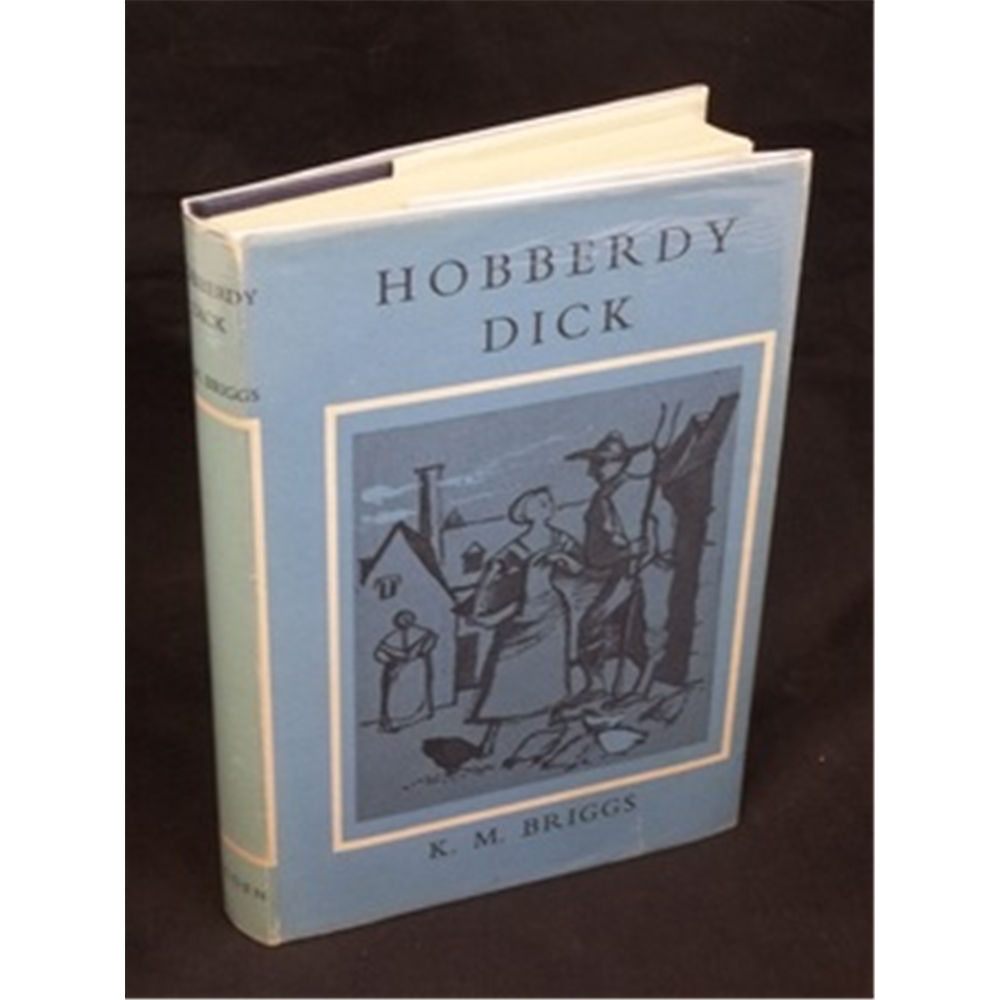Review: Hobberdy Dick July 29, 2014
Author: Beach Combing | in : Modern , trackbackKatharine Briggs is the world famous folklorist, who wrote many books on folklore and fairies, some above average, some outstanding. Among her lesser known works are two folklore novels that she wrote in the 1960s, Kate Crackernuts and Hobberdy Dick. I’m trying to read KC at the moment and not having much luck, but the reason I’m still trying is that HD was such an outstandingly good read. Both books are for children, though I’m not sure that even a modern sixteen year old would have the necessary patience with some of the dialect passages: what kind of children did KB know? But they are books that adults could easily read in three or four hours and, at least in the case of the second, enjoy.
Hd takes a simple story, a hobb – a domestic sprite in southern England at the time of the English civil war – and his travails. The book begins with a royalist family being driven out of his home Widford Manor and a puritan family arriving. Dick is loyal to the house and tolerates the new and all too godly tenants. He acts, though, as domestic fairies are wont. He pinches and makes miserable his enemies in the family and he pamper and helps those he loves. What is most interesting is his plotting. In trying to win this or that outcome he has to manipulate those who live in his midst, most of whom have no idea of his existence. The problem is that humans are difficult and Dick is often bemused to see that his careful plans have unexpected or even catastrophic consequences. The book becomes, in the end, a study in motivation.
The other wonderful element of Hobberdy Dick in the strange parallel universe that stretches in and around the house. Dick has to put up with the humans, but he also has to relate to a money-counting ghost, an old dyke god who has fallen on hard times and a local coven of witches. The fact that Dick is perched between these two worlds gives the reader a sense of being on a mountain top and looking down in impotence at a complicated and rather unfair landscape. Oh and then there is the ending, which is entirely unexpected. I wept. It is scandal that this book is not better know by those who love folklore. Other great fairy fiction books: drbeachcombing AT yahoo DOT com
31 Oct 2017: RR with a question: Thanks again for introducing me to this lovely book. I recently re-read it and was struck by a line in Chapter 9 wherein Hobberdy is traveling to a nearby farm to obtain feathers for some medical use. The sentence reads, “He moved in a small world of his own, which moved with him like a sphere.” Further, “he drifted like a large snowflake…” In all other accounts of HD moving/walking, he is like a human, albeit more agile and adroit. Those sentences made me think of the Wizard of Oz, where Glinda moves within a sphere and doesn’t appear to travel as we do. I doubt whether K.M.Briggs had this in mind. On the other hand? A small thing, perhaps, these two sentences, but it rang something in me. “Drifted like a large snowflake” ?? Hmmm. So unlike HD’s usual movements on the ground. Maybe I’m reading WAY too much in this and should chalk it up to poetic license on the part of the author. I would be interested in your thoughts, if you care to share.
Beach writes: two thoughts. First there is lots on rolling supernatural beings, there is also a lot of modern sightings where fairies appear in light globes. Can anyone else help RR?



